On this page will be pictures of sculptures I made in Fall 2017. The first one is a (3,5) torus knot carved from a 2"x6"x6" block of spalted tamarind wood. Here are pictures of the two sides.
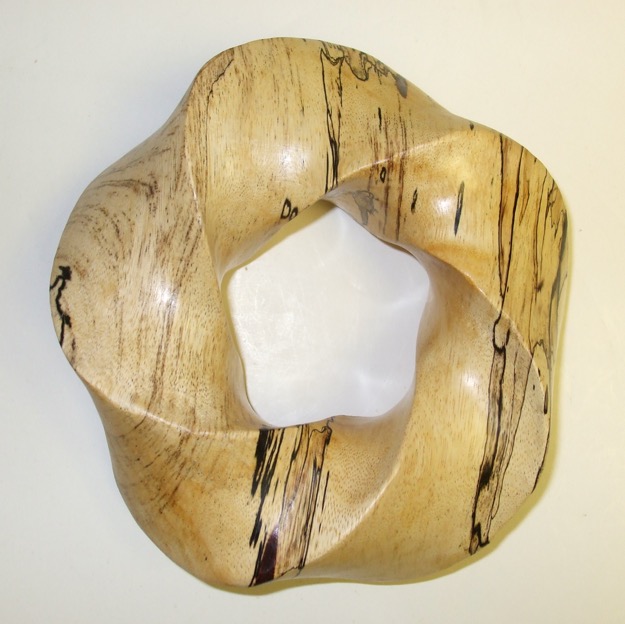
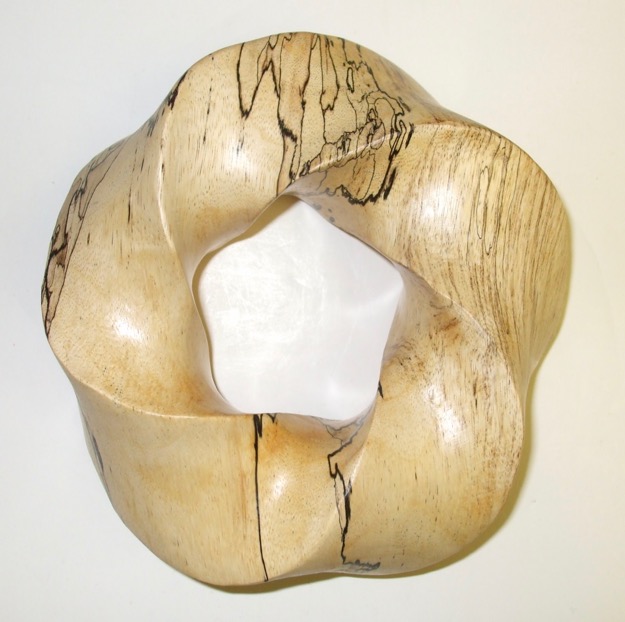
Here are pictures of the three sides of a small ``Twist" sculpture I made from the center cylinder of the Spalted Tamarind block. It is approximately 1.75" in diameter and 2" tall. The fourth picture shows it next to the torus knot, for comparison of sizes.
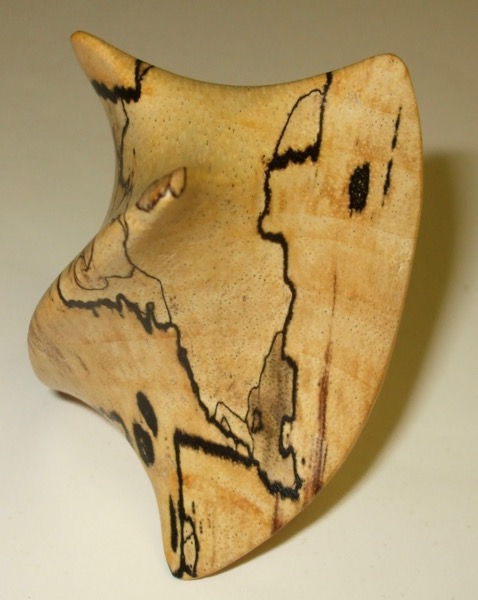
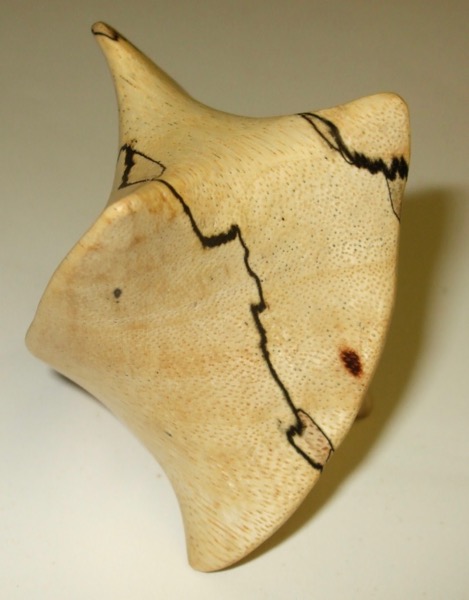
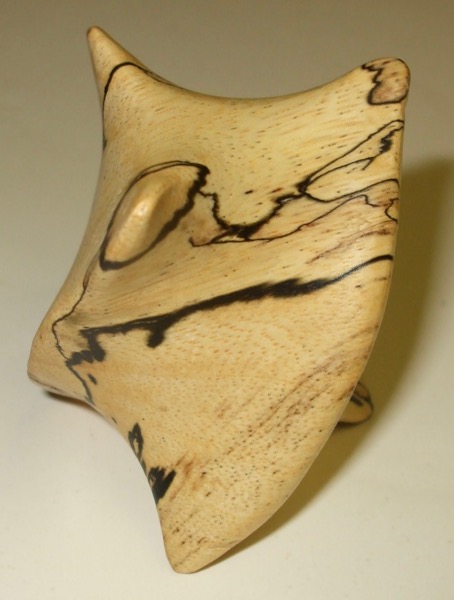
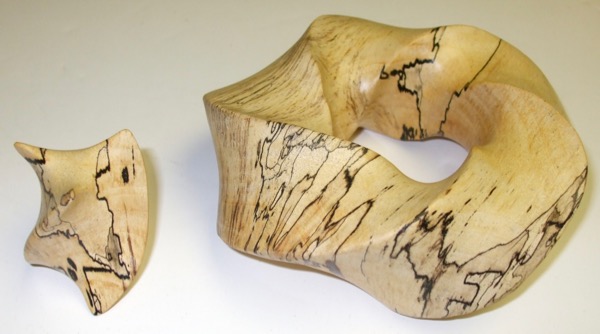
Here are two pictures of my latest variation on the trivalent tree, the Saddle Trivalent Tree Pendant, 3D printed by Shapeways.com in Rhodium plated brass, and in a transparent acrylic material finished in Frosted Ultra Detail. In this design the tree is draped on a ``saddle surface", that is, a hyperbolic paraboloid, z = x2 - y2, like a potato chip. The previous version was draped on the cap of a sphere. The curvature is rather gentle, so it does not show very clearly in these pictures.
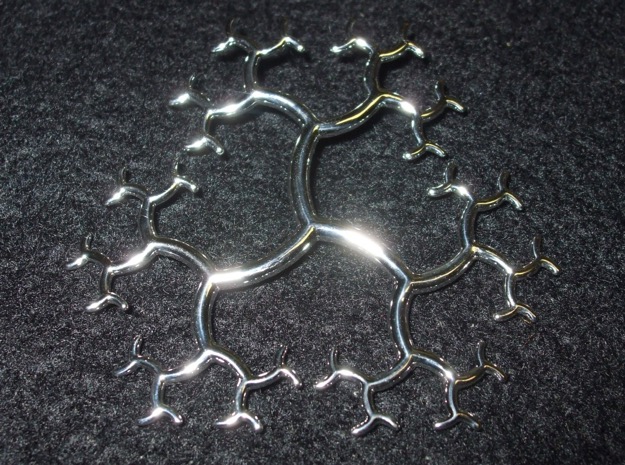
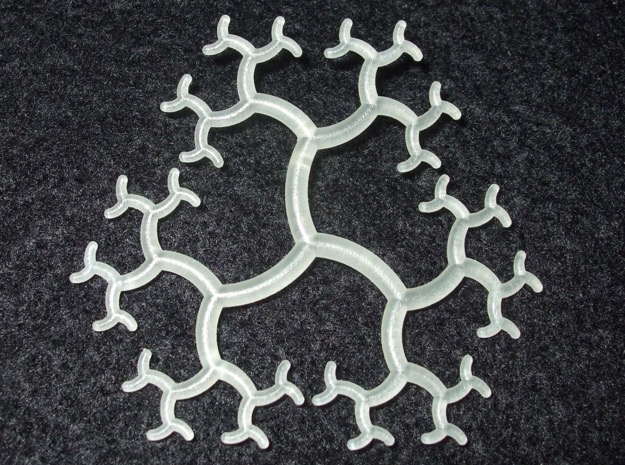
Below are four pictures of a wood sculpture I completed on Oct. 5, 2017. The pictures show the top view and a front angled view of each side of the piece. It was carved from a 2"x6"x6" piece of Amazakoue wood, and has three holes, making a genus 3 surface. The raised edges form three separate curves, each of which pass through a pair of holes. So I call this a Genus 3 Triple Link. It was inspired by a surface made by another artist on Shapeways.com, but it is not hollow since I carved it from one piece of wood.
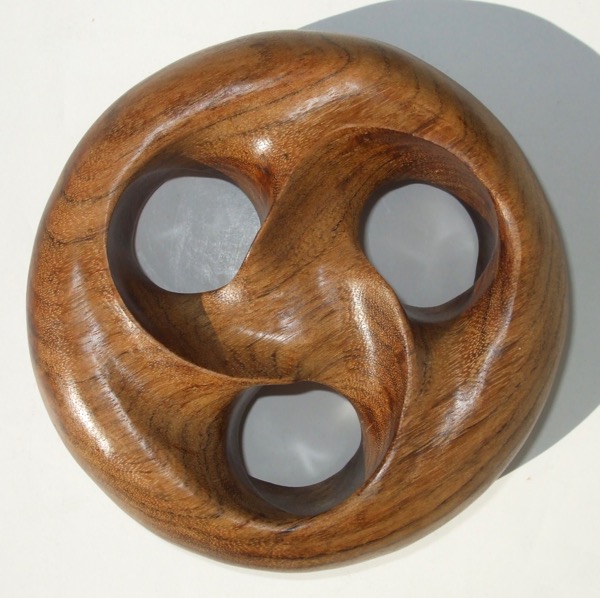
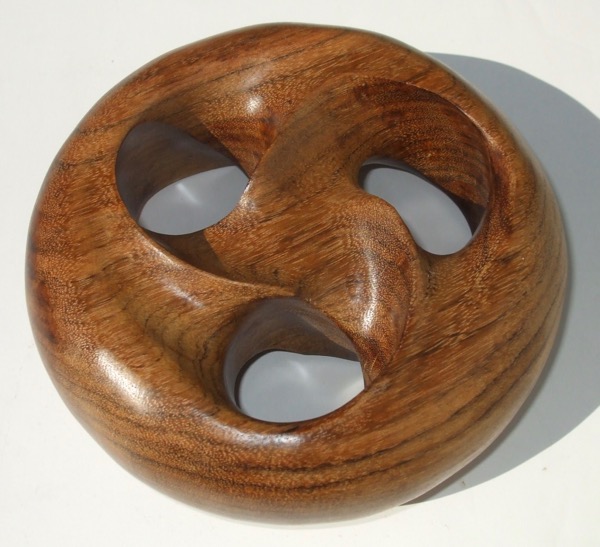
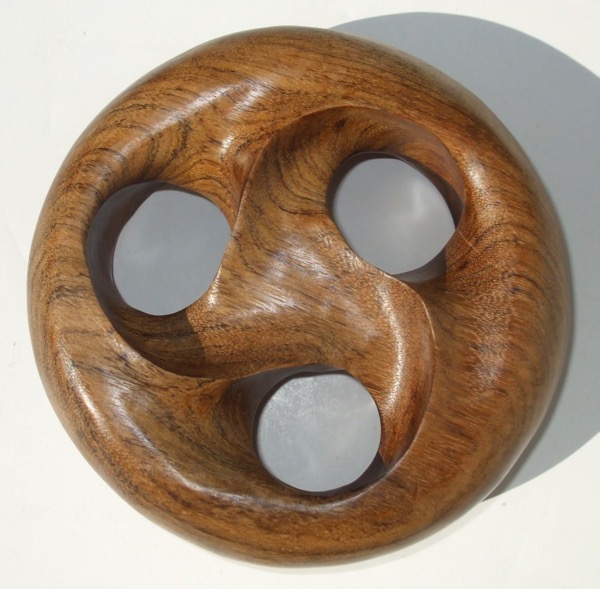
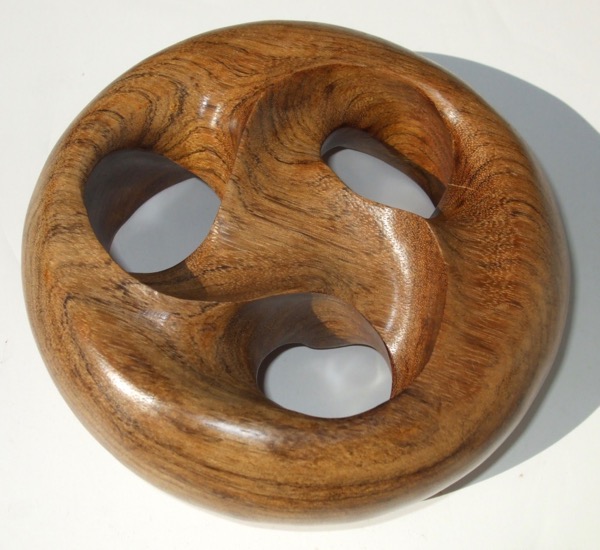
Below are three pictures of another wood sculpture I completed on Oct. 5, 2017. The pictures show the two sides and a front angled view of the piece. It was carved from a 2"x4"x4" piece of Sycamore wood, and is a (3,5) Torus Knot, as I have made many times before, but this is the first time I have used Sycamore wood.
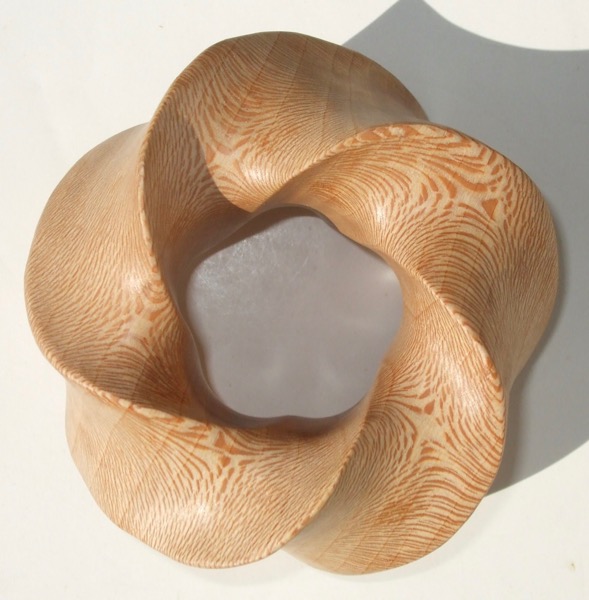
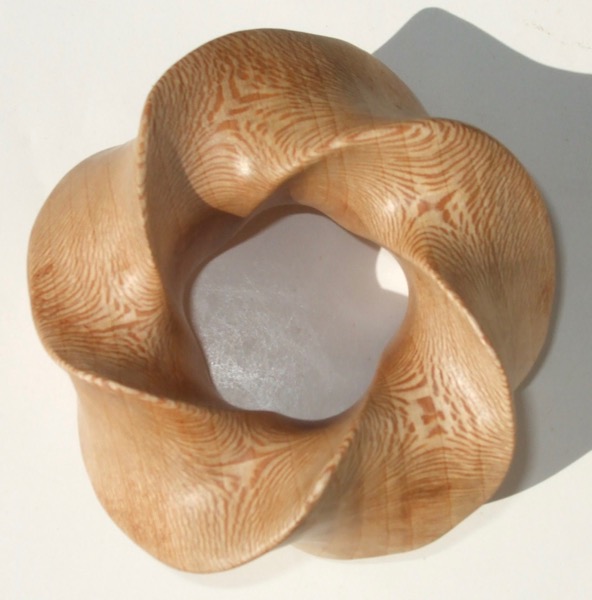
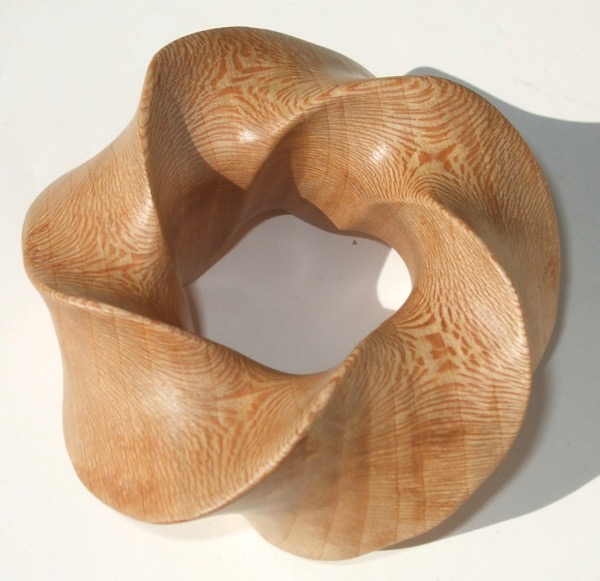
A distinguished professor at the Institut des Hautes Etudes Scientifiques (IHES) showed me an interesting mathematical toy. It consisted of 6 L-shaped pieces, each of which could be attached to one end of another, making a 3D polygon where all angles were 90 degree angles (at the elbows of each L). At the points of contact, where two legs of different L's form a straight line, the only motion possible was a twisting rotation. When arranged initially as 6 edges of a cube (each edge being two legs of two different L's), there were two possible choices. In the choice shown in the video below, a side view looks like a big L made from two adjacent faces of the cube. For that choice, the object is flexible, and can cycle through an infinite number of distinct positions, but coming back to the original position smoothly. But for another choice of initial position, shown in the second picture below, the object is rigid, and will not flex at all. I made my own version of this toy using wooden dowels, PVC pipe corners and tubes, and strong neodymium magnets and steel washers. I made 10 L's so I can experiment with these right regular 3D polygons with 6, 7, 8, 9 or 10 edges. The motion can be quite complex for larger polygons! Analysis of the possible positions leads to some rather deep mathematics. I am starting to explore this with my department colleague, Marcin Mazur.
Here is a bit more detail about how my version is designed. It is made of 6 L-shapes, each having one 90 degree PVC elbow and two wooden dowels, one having a neodyium magnet attached to its end, the other having a steel washer attached. When a magnetic end is brought near a washer end, there is a strong attractive force, but the whole thing would still twist apart without the outside PVC tubes which hold the legs of two L's in a straight line. They also allow the dowels to freely twist if the geometry makes that possible.
Download AVI file of movie showing my Right Regular Flexible 3D Hexagon here.
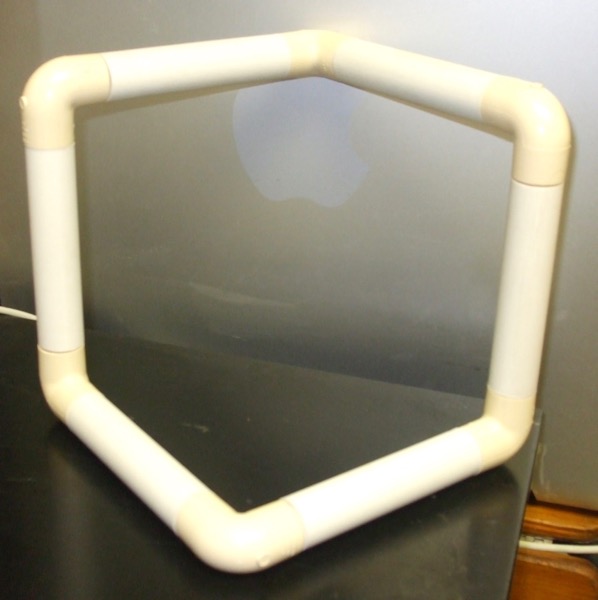
Below are three views of a (3,5) torus knot carved from Black Palm wood, completed on Oct. 12, 2017. The original block of wood was 2"x4"x4" but the completed piece is approximately 3.75" in diameter and 1.75" deep.
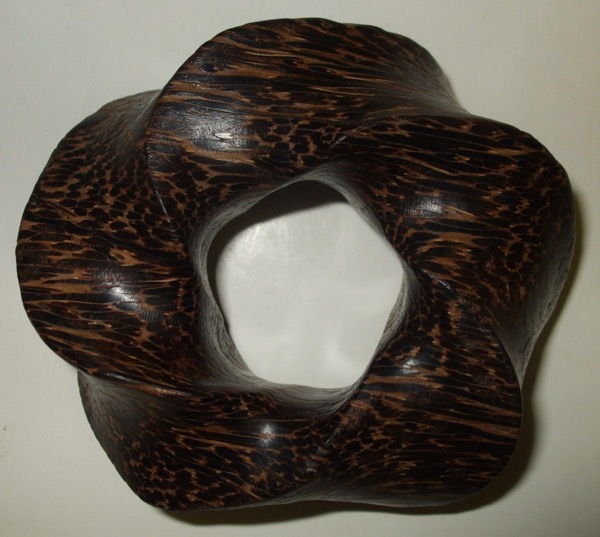
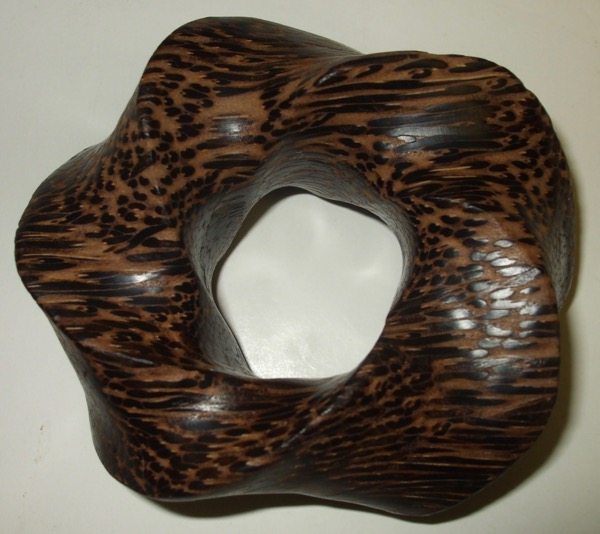
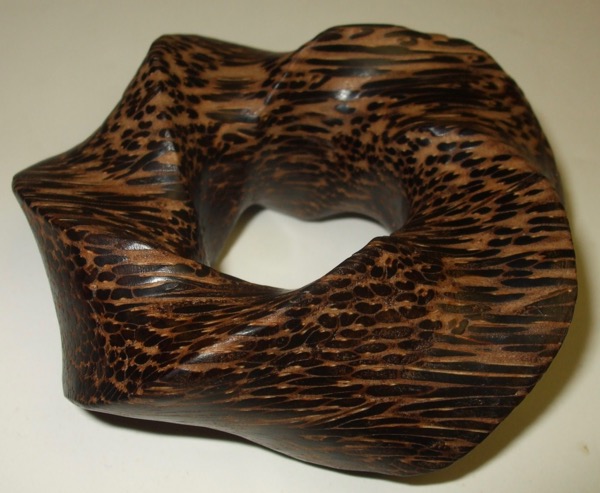
Here are four views of a Brazilian Cherry wood carving I completed on Oct. 15, 2017. It was made from a block of size 3"x10"x10" and the completed piece is 9.5" in diameter and 2.75" deep. Like the genus 3 Amazakoue piece shown above, this carving was inspired by a design of an artist from Shapeways. But during the carving process I made the curves going through the three holes more shallow, so they ended up forming a single long curve that passed through each hole twice (once going up and once going down).
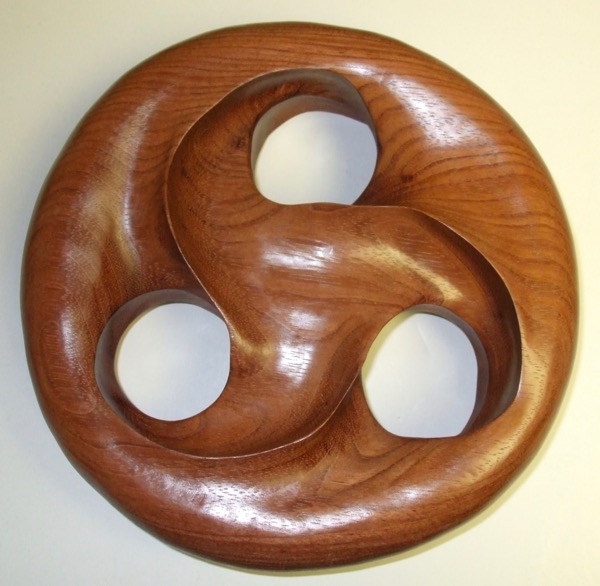
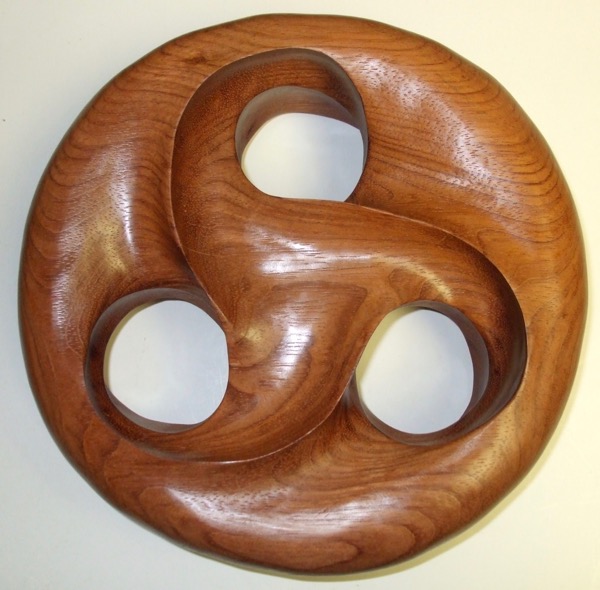
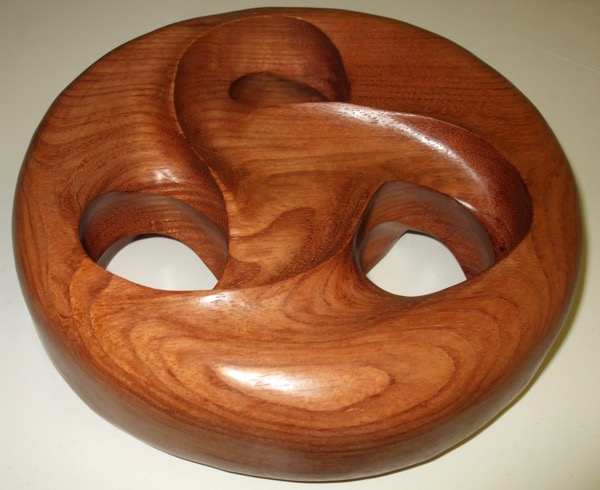
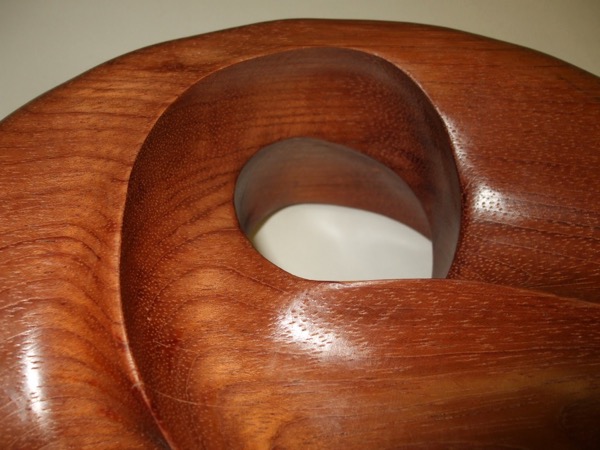
In early August 2017, I received a request through my Shapeways account from a couple in Princeton who wanted to use my Mobius Figure Eight Knot design as earrings and a pendant in their wedding ceremony. I was able to quickly rescale the design by a factor of the golden ratio, phi, (their choice) to make the pendant larger. They got a pair of copies of the usual size for her to use as earrings, and one of the larger size to use as a pendant. They sent me four pictures to show how they looked on the bride, as you can see below. I cropped their pictures to focus mostly on the jewelry. These were the rose gold plated brass versions. Thanks to Gecia and Lee for putting my jewelry to such fine use, and thanks for the pictures!
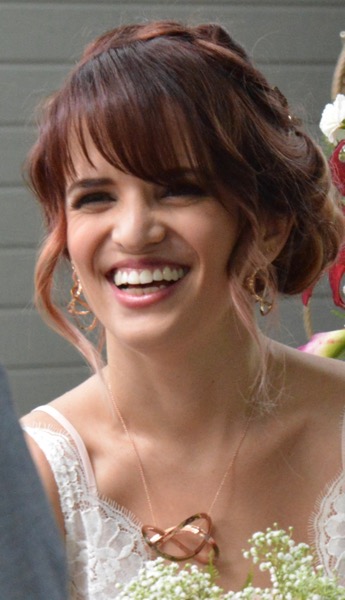
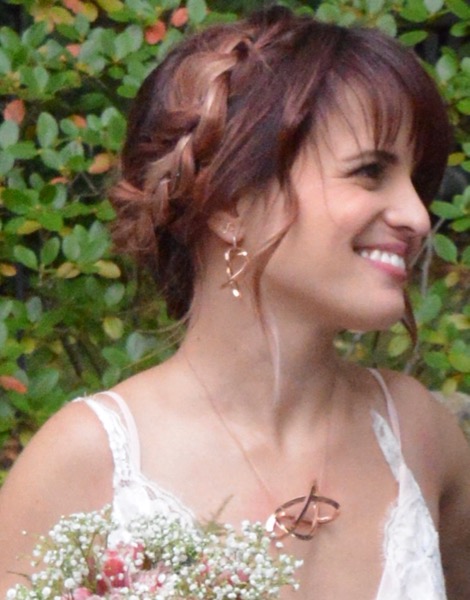
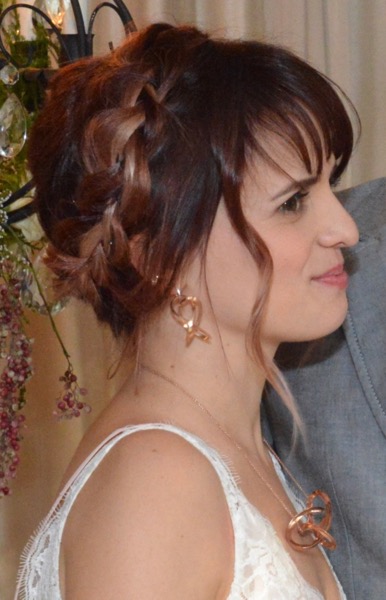
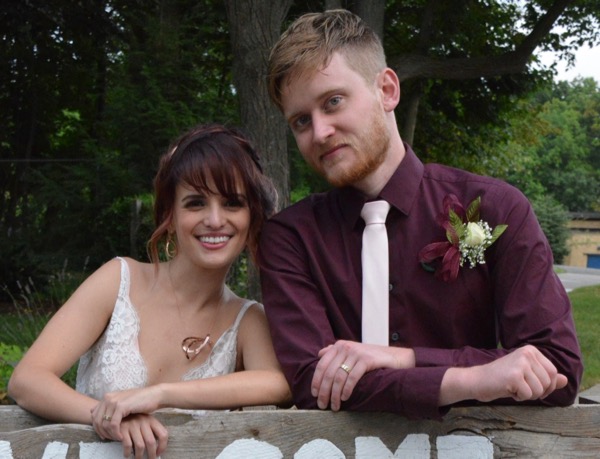
To see more types of sculpture I have tried, follow the following links:
Links back to:
Webpage of Alex Feingold,
Department of Mathematical Sciences,
Binghamton University.